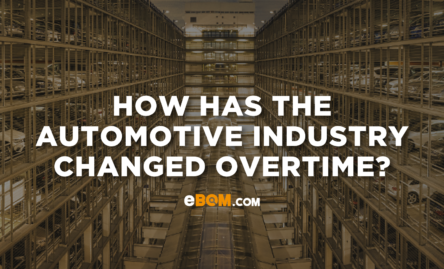The automotive industry has developed leaps and bounds from when cars were first properly introduced to the public in the late 1800’s, thanks to the advanced technology we have today. Many people nowadays rely on cars to travel to most places due to their convenience and efficiency. According to Statista, 87 percent of UK residents have a car available. However, a few hundred years back when there were no traffic lights or drivers’ licences, the automotive industry was a chaotic scene.
1800’s
Going way back to the 1800s, inventors tried to make cars that would run well enough to use every day, from steam to gasoline to electricity based. It was by 1905 when gasoline cars were more popular than steam or electric cars, this was mainly because they could travel further and were easier to use. However, not all inventors were building cars for efficiency. The Stanley Runabout car was built purely for speed, at a whooping 35 mph, the Runabout closed out the 1800s as the fasted production car in the world. Nowadays, for all standard cars, 35 mph is at the slower end of the speed spectrum – with few cars able to travel over 250 mph. According to history.com, Bicycle mechanics J. Frank and Charles Duryea of Springfield, Massachusetts, had designed the first successful American gasoline automobile in 1893, then won the first American car race in 1895, and went on to make the first sale of an American-made gasoline car the next year. As you can imagine back in the 1800s, the automotive industry was not exactly a well-known industry due to the lack of available and reliable vehicles on offer.
1900’s
In the 1900s, most early automobile companies were small shops of which each produced a few handmade vehicles. It was during World War 1 when a mass production of automotive vehicles arose and were used in combat, known as the start of the modern armoured warfare. The most produced tank in World War 1 was the Renault FT. It was later in the 1900’s when mass production of cars took place, including more technological advancements such as airbags. Ford’s Model T production rockets from 7.5 cars per hour to 146 cars per hour, thanks to the utilization of the assembly line, according to titlemax.com. As technology improved, so did the efficiency and safety of vehicles. In conclusion to this, it was in 1924 when the car radio was introduced and 1998 when the smart key was invented.
2000’s
Moving onto the 2000’s, this was when many technological advancements in vehicles you see today, were invented. It was in 2008 when the advanced turbocharging went mainstream, both GM and Ford introduced small turbocharged engines that signalled the tech had matured enough to install in the company’s least-expensive cars. Now automakers could use smaller, more efficient turbo engines and retain (or even exceed) the power levels of larger engines which were built for speed. Today, nearly every manufacturer has downsized its engines to smaller turbocharged ones with a boost in performance and fuel economy, according to Popularmechanics.com.
Today
In today’s world we have a wide range of automotive vehicles to chose through, from motorcycles to planes to electric cars. Electric car deployment has been growing rapidly over the decade, with the global stock of electric passenger cars passing 5 million in 2018, an increase of 63% from the previous year, according to iea.org. However, due to COVID19 there was an overall decline in car sales which was clearly linked to low consumer confidence. During the height of restrictions, many car-owning households would not have been able to replace their car as normal. Not only this, factories also had to shut during the peak of lockdown which resulted in a backlog of cars needing to be manufactured.
Future
The future of the automotive industry looks like a very technological and environmentally friendly place due to the rise in electric vehicles. However, a more recent sector of the automotive industry is driverless cars. On a recent survey carried out by CNBC, 15% of the US public said they do not believe there will ever be an autonomous vehicle on the market, and 42% said they would never ride in a fully automated vehicle. In 2016, a driver was killed when the sensors of a car driving in autopilot mode failed to detect a truck. This was the first big automotive accident caused by AI which may have put off a lot of potential customers. Nevertheless, despite the fact autonomous vehicles are not entirely trusted by customers and the public, there are many benefits to them. On a positive note, driverless cars could potentially increase road safety along with reducing traffic. According to Lifehack, 1.2 million people are killed each year in traffic accidents. Studies have shown that even partial automation of driving could significantly reduce these deaths, making the roads safer for everyone. Already, many AI incorporated vehicles have forward collision warning systems that alert drivers or even automatically brake.
By Amy Leary, Marketing Manager at eBOM.com










